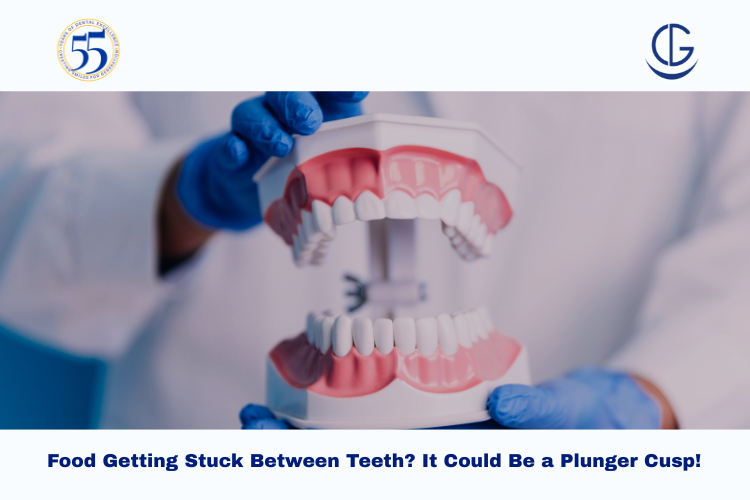Schedule Appointment




Dealing with food getting stuck between your teeth constantly? You might be facing a dental problem known as a Plunger Cusp. This issue is especially common in molars and can lead to food impaction, premature tooth contact, and other complications if left untreated. At Dr. Gowds Dental Hospital, Hyderabad’s trusted name in dental care, we specialize in diagnosing and treating plunger cusp issues using advanced occlusal adjustment and restorative dentistry techniques to restore proper tooth anatomy and function.
A plunger cusp refers to a pointed cusp (typically on a molar) that extends too far into the space between two adjacent teeth. Instead of fitting smoothly with neighboring teeth, it forces food into these spaces—leading to food impaction between teeth and discomfort.
Our teeth are designed with specific cusps, grooves, and ridges that help us chew effectively. When these natural forms are disrupted—either due to dental work or tooth wear—it can cause dental cusp interference, affecting the alignment and interaction of upper and lower teeth. A plunger cusp in molars often results from such anatomical issues.
Ignoring a plunger cusp can lead to:
Regular food trapping not only causes irritation but may also lead to long-term oral health damage.
A dentist will use:
If a plunger cusp is suspected, early diagnosis is key to preventing complications.
At Dr. Gowds Dental Hospital, we offer:
We blend modern dentistry with patient-centric care to restore healthy smiles with long-lasting results.
A plunger cusp may seem like a minor annoyance, but it can lead to serious dental complications if not addressed. Whether it’s dental cusp interference, premature tooth contact, or food impaction under a crown, early intervention is key. Treatments such as occlusal adjustment, crown replacement, or bite correction can significantly improve your oral health.
If you’re dealing with constant food trapping or discomfort while chewing, don’t wait. Consult the experts at Dr. Gowds Dental Hospital, Hyderabad, for an accurate diagnosis and effective treatment.
A plunger cusp in molars refers to a sharp portion of tooth that forces food into a region between teeth, resulting in food impaction and discomfort.
Food impaction can be managed with occlusal adjustment, reshaping cusps, or correcting other faulty restorations. It would be best to visit a dentist for proper plunger cusp management.
Food impaction under a crown is often caused by improper crown fit or restorative dentistry. An ill-fitting crown will retain food, which can irritate the gums.
Yes, premature contact will cause a bite imbalance, jaw pain, and wear and tear on other teeth. It is often accompanied with cusp interference.
Dr. Gowds Dental Hospital has a lot of experience with plunger cusp management cases and bite adjustment, as well as restorative management, making it the best option in Hyderabad for treatment.